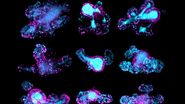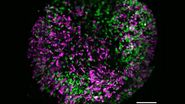Installed within an L2 biosafety lab in the MIMA 2 Imaging Core Facility at the Micalis Institute, the Mica Microhub plays a pivotal role in helping researchers elucidate how microbial communities interact with 3D food matrices and alter their chemical and nutritional properties.
Due to the multi-user nature of the facility, the team needed a system that could handle diverse samples and perform a variety of microscopy techniques including high-resolution 3D imaging, time-lapse imaging, widefield fluorescence, confocal and transmitted light microscopy.
Video 1: Micalis: Improving Human Health Through Innovative Food Microbiology Research
Dr. Romain Briandet, Dr. Nicolas Barraud and Dr. Vlad Costache introduce the Micalis Institute and the “Ferments du Futur” platform and explain why the Mica Microhub is enabling their vision to accelerate innovation in the food sector by harnessing the power of ferments and fermentation. See how high-throughput information on spatial structures and interactions is combined with spatial transcriptomic data to advance the understanding of microbial biofilm formation, pathogen invasion, and microbial dynamics.
Video 2: Inside Kefir Grains: Studying Microbial Interactions with fluorescence and transmitted light imaging.
Alice Marant - Food Microbial Ecosystems Engineer at Micalis - describes how she uses widefield and transmitted light imaging in Mica to investigate bacterial-yeast interactions in live three-dimensional (3D) kefir food matrices, which are commonly used to start fermentation processes.
Video 3: Food Safety: Exploring Salmonella 3D Biofilm Architecture with Brightfield and Confocal Imaging.
Hugo Grandjean from the Biofilms and Spatially Organized Communities Team, explains why studying Salmonella enterica serovar Agona 3D biofilm architecture is important in the food industry for infant milk formula safety, and how Mica’s streamlined microscopy workflows saved valuable time in his research.
About Micalis and Ferments du Futur
Situated in Jouy-en- Josas in Northern France, the Micalis Institute is a collaborative research unit affiliated with INRAE, AgroParisTech, and Université Paris-Saclay. Researchers investigate the interactions between food, foodborne microorganisms, and hosts to understand their implications in health and disease. The institute also hosts the “Ferments du Futur” platform, a public-private partnership focused on accelerating research and innovation in ferments, fermented foods and biopreservation.





